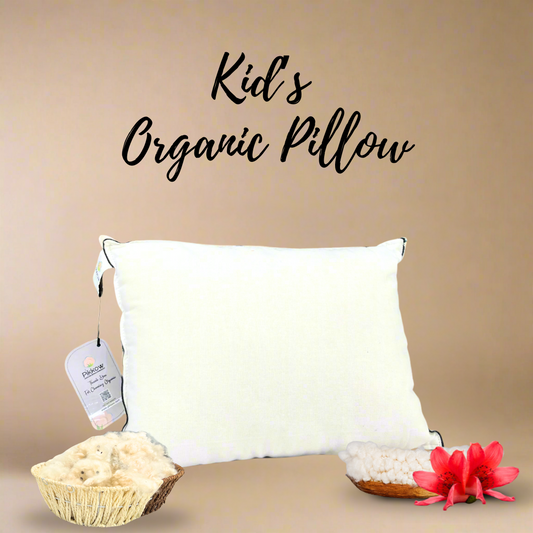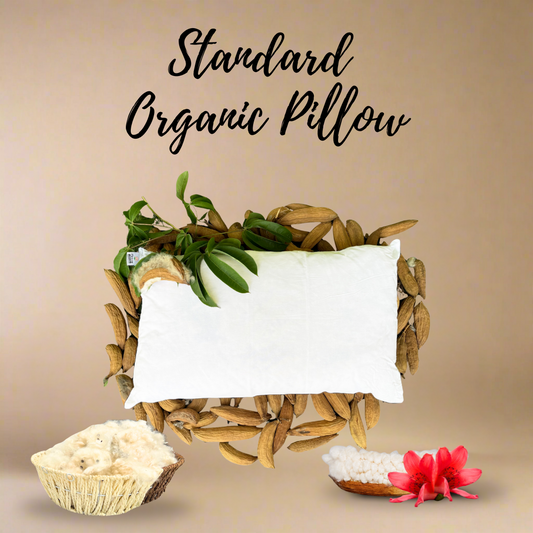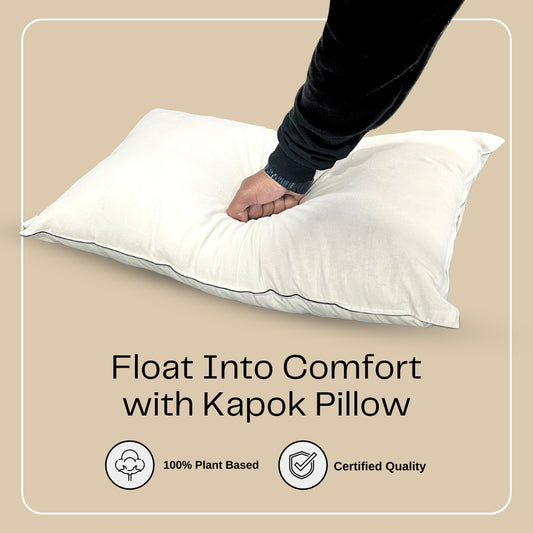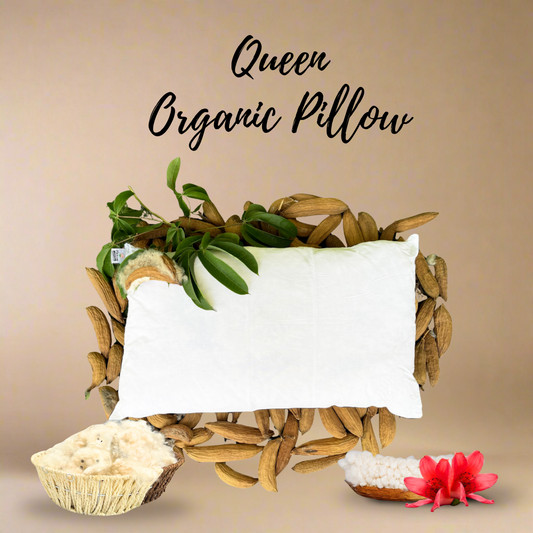Looking for a healthy, natural pillow in India? You’re making a smart choice but even well-intentioned shoppers can go wrong. In this guide, we expose the top mistakes when buying organic pillows so your family gets a safe, eco-friendly, comfortable pillow without wasting money or sleep.
1. Confusing Natural vs. Organic Pillow
One of the biggest mistakes when buying organic pillows is falling for marketing fluff. “All-natural” doesn’t always mean chemical-free. A genuine organic pillow buying guide recommends always checking for certified materials like GOTS certified pillows. Without this, you risk buying uncertified organic pillows that may still contain toxins.
2. Choosing the Wrong Pillow Material
Another major pitfall: choosing the wrong pillow material for your needs. Kapok is breathable and supportive for Indian summers, but memory foam or polyester heat up fast and aren’t ideal. For kids and elders especially, selecting unsuitable pillow for neck support can cause discomfort or stiffness.
3. Ignoring Breathability & Airflow
One of the most overlooked common pillow buying errors is neglecting breathability. Ask yourself: How to choose breathable pillow filling for summer? In hot, humid climates esp. for kids, elders, and those who sweat easily choose airy fillings such as kapok or organic cotton to prevent sweat and discomfort.
4. Overpaying Without Checking Quality
It’s easy to see high price tags and assume quality but that’s a classic overpaying for organic pillows mistake. Look deeper: check for low quality organic pillow fillers, absence of certifications, flimsy construction, or lack of durability. Research independent reviews don’t rely on packaging alone.
5. Picking the Wrong Loft or Firmness
Another mistake is poor pillow loft selection or pillow firmness misunderstanding. Kids and elders need softer support; side sleepers may need medium to high loft. Make sure your pillow suits your sleep position a mismatch leads to pain and restless nights.
6. Skipping Certifications & Greenwashing
Some brands rely on greenwashing in pillow brands, showing vague words like “eco” or “earth-friendly.” Instead, commit to organic pillow certifications to look for: GOTS, GOLS, and OEKO-TEX standard 100. Without those, you risk how to avoid fake organic pillows.
7. Not Considering Trial Period & Return Policy
One common misstep is skipping trial or test period. Pillows feel differently at home. A good brand offers a 30-day trial so you can decide if it really fits your needs. Don’t skip this stage or you could be stuck with an uncomfortable organic pillow.
8. Picking Style Over Function
It’s easy to get glamoured by stylish covers—but ignoring function is a mistake. Avoid the picking style over function trap. Choose features that matter: cooling pillow cover materials that reduce sweat, soft organic cotton, or bamboo fabrics—not just shiny visuals.
9. Blindly Trusting Online Reviews
Although reviews can help, buying without checking user reviews or vetting sources is risky. Look for detailed feedback (e.g., “perfect for night sweats” or “best pillow for hot sleepers”). Verify the reviewer is a kapok user, not just repeating brand promises.
10. Forgetting to Match Accessories
Even a great pillow feels off if your bedding doesn’t breathe. One overlooked thing is mistakes in selecting sleep accessories. Use breathable pillowcovers and organic sheets. This supports the pillow’s performance—especially when dealing with pillow fill for night sweats.
Expert Tips: Picking the Right Organic Pillow
-
Focus on certified kapok: It’s naturally cooling and free from VOCs.
-
Pick a pillow which has adjustable loft so you can customize firmness.
-
Inspect covers: Look for bamboo or cotton pillowcases that wick moisture.
-
Go for trial periods—don’t settle until you’ve tested it overnight.
-
Check return policy to be eligible in case it doesn’t work for your neck or head shape.
Why Kapok Pillows Stand Out
Among the most trusted organic pillow buying guide picks, kapok consistently wins due to: breathability, lightweight feel, hypoallergenic properties, and sustainable sourcing. Notably, Pikkow pillows offer kapok pillow for summer designed for Indian climates—perfect for kids and elders alike. You get chemical-free comfort, easy maintenance, and cooling relief.
Avoid These Mistakes
By steering clear of these 10 pitfalls especially when shopping for organic pillows—you’ll end up with a safe, effective, long-term sleep solution. Focus on credentials, comfort, breathability, and trial options. Your best bets? A good kapok pillow for summer, grown naturally and backed by reliable testing.
FAQs
1. What’s the difference between natural vs. organic pillow confusion?
“Natural” may still contain chemicals. Only “organic” guarantees chemical-free, ethical material sourcing.
2. How to choose breathable pillow filling for summer?
Opt for airy, plant-based fills like kapok or organic cotton, coupled with moisture-wicking covers like bamboo or cotton.
3. Best plant-based cooling pillow fill for hot sleepers?
Kapok is top-rated—it stays cool, repels dust mites, and regulates temperature during warm nights.
4. What are common pillow buying errors?
Skipping certifications, ignoring loft/firmness based on sleep position, buying without a trial period, and only picking for looks.
5. Which pillow stays cool all night?
A well-made kapok pillow especially a certified one like Pikkow—with breathable covers, is one of the best pillows for summer heat and night sweats.












